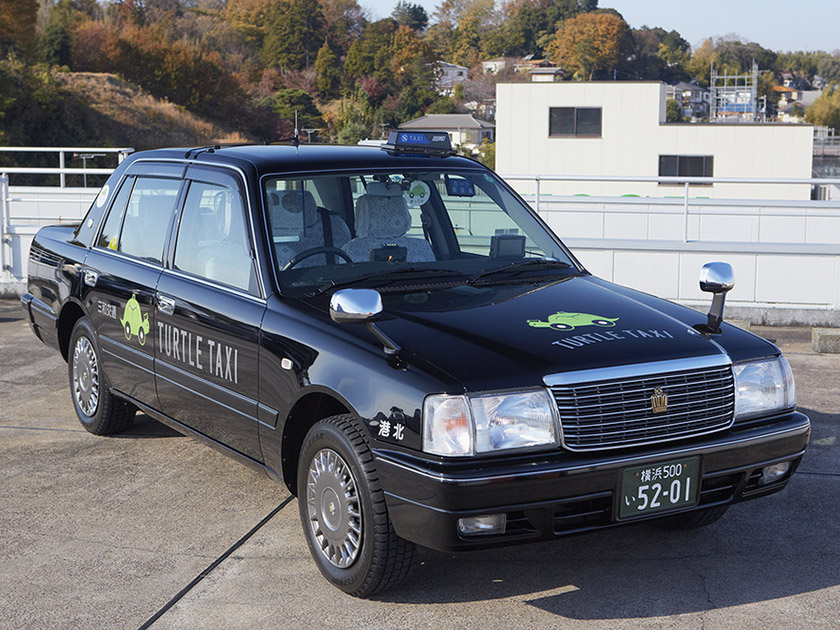Slow and Steady
When you hail a taxi, you generally want to get from point A to point B and relatively quickly — in an urban area, at least, it means that you’re willing to pay the extra few dollars for the speed that a cab provides versus, say, public transportation. But one Japanese taxi company decided to take a different approach — they decided to take it slow.

The company, called Sanwa Koutsu, it a taxi service like any other, offering rides to those in need for a fee. But some of their vehicles, such as the one seen above, are labeled “Turtle Taxis” and, upon the rider’s request, go at a slow but constant (as possible) speed toward the intended destination. The rider simply pushes a button, depicted below, and the driver is informed of the rider’s desire for a more peaceful, leisurely clip. A turtle indicator on the windshield lights up, alerting other drivers that the car may not keep up with the flow of traffic — it’s going to putter along at its own pace.

Despite the apparent absurdity of such a feature, it was actually well received. First, the design community in Japan applauded the innovation, noting that slower cabs are more environmentally friendly than their speedster cousins. As Design Made in Japan reported, “the eco-driving element is achieved by eliminating the need for sudden acceleration or deceleration, which contributes to the improvement of fuel efficiency and CO2 reduction.” And second, for some clients, slower is better — Oddity Central noted that “the service is quite popular in Japan with senior citizens, pregnant women, mothers with young children, and tourists who would like to take in more of the city while commuting.” (Imagine a child who often gets car sick — it’s easy to see the value of such a service to child, parent, and for that matter, driver.)
And the program has proven popular. In December 2013, Sanwa Koutsu rolled out the program in ten of its roughly 500 cars, according to the Japan Daily Press, and added another half-dozen shortly thereafter, all in the Yokohama area. The company also was considering rolling out the buttons to even more cars and in multiple cities in 2014, with one outlet reporting that “it plans to introduce the system to all its cabs sometime next year [and] to offer the service in Tokyo, Kanagawa and Saitama.” But don’t blame Sanwa Koutsu if they take the expansion efforts slowly.
 Bonus Fact: Acclaimed actor and comedian Eddie Murphy got his start as a regular on Saturday Night Live — he was part of the cast from 1980 to 1984. According to the book “Live From New York: An Uncensored History of Saturday Night Live, as Told By Its Stars, Writers and Guests,” though, Murphy had one particular problem working on SNL — it was hard for him to get home after the show aired. Why? As his co-workers explained, cab drivers typically wouldn’t pick up a young, African-American man that late at night (typically around 2 A.M.). Each week, Murphy had to ask a colleague to hail a cab for him.
Bonus Fact: Acclaimed actor and comedian Eddie Murphy got his start as a regular on Saturday Night Live — he was part of the cast from 1980 to 1984. According to the book “Live From New York: An Uncensored History of Saturday Night Live, as Told By Its Stars, Writers and Guests,” though, Murphy had one particular problem working on SNL — it was hard for him to get home after the show aired. Why? As his co-workers explained, cab drivers typically wouldn’t pick up a young, African-American man that late at night (typically around 2 A.M.). Each week, Murphy had to ask a colleague to hail a cab for him.
From the Archives: Septuagenarian On Board: A Japanese spin on “Baby on Board” indicators on cars.
Related: “Live From New York: An Uncensored History of Saturday Night Live, as Told By Its Stars, Writers and Guests.” 4.1 stars on nearly 300 reviews.
